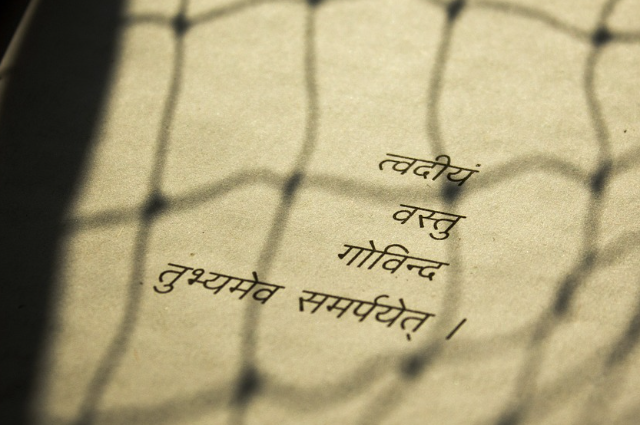
Image by Jinali Parikh from Pixabay
Sanskrit – The traditional and the oldest language of India, the language in which all our scriptures are written, a language found in our ancient sculptures, scriptures and history. India is a country with diverse cultures and as the cultures differ from the Himalayas to the Indian Ocean and the deserts of the Khar to the hills of Nagaland, so do the languages, sometimes the languages differ so starkly that 2 people from opposite ends of the country would not understand head or tail of what the other is talking about, sounds a babble, sometimes a box of stones, noise, sounds and nobody understands each other. Therefore the necessity is great for a common language to exist together, to co-exist, to live in the Country, to be a single Country, to be an Indian, and to have the liberty and advantage that a diverse economy of a region as India, designated by international political boundary can provide to the humans of the region. The Constitution designates Hindi as the common language –
"The Constitution has never declared Hindi as the national language, rather, in 1950, it has accorded Hindi in Devanagari script to be the official language of the union along with English under Article 343.”
Hindi in the form that is written and spoken today has flavours of Sanskrit, Devanagari, Persian language and Urdu. But is disputed and is revolted by many as mostly a forced adoption by Northern India. This may be true for at the time most of the powers that be were from that part of the country. But then the question arises – what can be the common language in a country that has 22 official languages, 461 recorded languages and each language has it’s own regional variations and accents etc., etc... The claim from most parts is to make Sanskrit the official language. But Sanskrit as practiced in India is a language of our Scriptures, It’s a language that governs the basic instincts of our lives, it’s a language in which the philosophy of the Hindu religion is prescribed for living through, for tiding through the ocean of life. It’s that language in which Shiva or Vishnu preaches life to us – the language of the Gita, the Puranas, and The Vedas.
Sanskrit is a language that the Hindu worships in and prays in – if we consider this – all our mantras are/were written in this language – the energies that be – the positive forces, the negative forces, they were summoned and created with this language. The language with cleansing or whatever the practice was supposed to have achieved. It purifies our homes by producing positive energies.
Sanskrit as a language is complicated in grammar, in phonetics, and to be read and understood and practised by all, here by all means, even the man on the streets, the uneducated, the not-so-intelligent or not-so-high IQ-ed individual too, would be a very difficult proposition.
Sanskrit is the language mostly of the learned, of the educated, of the one who has a clear tongue, the one who has a clear understanding of the phonetics, and grammar. It is also a language in which we worship, in which God passes on his message to the world; Would you not want your God to be a Superior being or else how will HE fulfil all your difficult-toachieve goals and if HE is so-common a being, why would you look-up to HIM. GOD always is halo-ed, he glows, he has something extra, and therefore he is GOD, He achieves for you.
As a common language spoken on the streets, to be understood by the masses, perhaps Sanskrit does not fulfil the bill or qualify as so. Sanskrit is regal, it’s Good when it’s near the altar, and it’s good on the throne and not on the streets. It’s to be worshipped and praised as it is and not quarrelled in or bad-mouthed in. Raja Harishchandra when becomes a beggar, becomes a legend for that’s a once-in-history event, when he is a king, he is to be placed back on the throne. He did not fit the bill or qualify as a beggar or a man on the streets.
